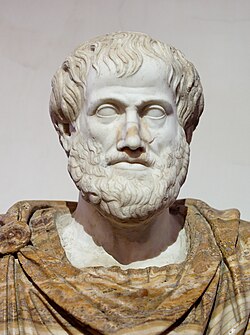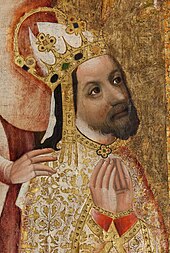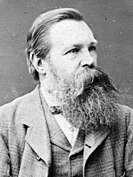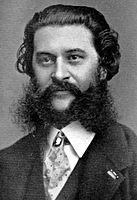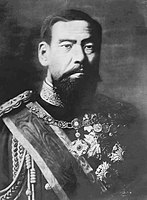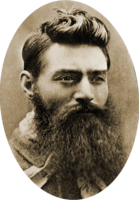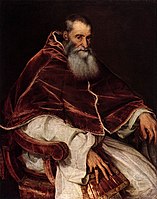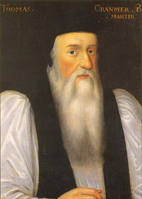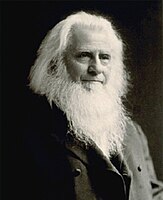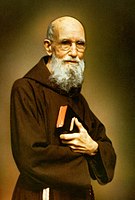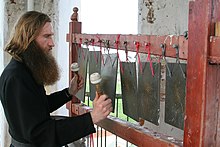Grrrrrrrr -eetings . here is a fun and fantastic addition to your costume gear, or the perfect gift for any fan.
this is a Credit Card Size fun novelty rendition of an official identification card.
It is approximately in Size: 3⅛ in. x 2⅜ in. It is constructed of Thick plastic... much like a standard credit card ...
Thanks most kindly, Harry
Beard
Jump to navigation Jump to search| Beard | |
|---|---|
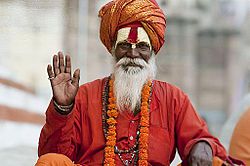 | |
| Details | |
| Identifiers | |
| Latin | barba |
| TA | A16.0.00.018 |
| FMA | 54240 |
| Anatomical terminology | |
A beard is the hair that grows on the chin, upper lip, cheeks and neck of humans and some non-human animals. In humans, usually only pubescent or adult males are able to grow beards. Some women with hirsutism, a hormonal condition of excessive hairiness, may develop a beard.
Throughout the course of history, societal attitudes toward male
beards have varied widely depending on factors such as prevailing
cultural-religious traditions and the current era's fashion trends. Some religions (such as Islam, Traditional Christianity, Orthodox Judaism and Sikhism)
have considered a full beard to be absolutely essential for all males
able to grow one and mandate it as part of their official dogma. Other cultures, even while not officially mandating it, view a beard as central to a man's virility, exemplifying such virtues as wisdom, strength, sexual prowess and high social status.
In cultures where facial hair is uncommon (or currently out of
fashion), beards may be associated with poor hygiene or an uncivilized,
dangerous demeanor. In countries with colder climates, beards help
protect the wearer's face from the elements.
Greece
The ancient Greeks regarded the beard as a badge or sign of virility; in the Homeric epics it had almost sanctified significance, so that a common form of entreaty was to touch the beard of the person addressed.[26] It was only shaven as a sign of mourning, though in this case it was instead often left untrimmed. A smooth face was regarded as a sign of effeminacy.[27] The Spartans punished cowards by shaving off a portion of their beards. From the earliest times, however, the shaving of the upper lip was not uncommon. Greek beards were also frequently curled with tongs.
In the time of Alexander the Great the custom of smooth shaving was introduced.[28] Alexander strongly promoted shaving during his reign because he believed it looked tidier.[29] Reportedly, Alexander ordered his soldiers to be clean-shaven, fearing that their beards would serve as handles for their enemies to grab and to hold the soldier as he was killed. The practice of shaving spread from the Macedonians, whose kings are represented on coins, etc. with smooth faces, throughout the whole known world of the Macedonian Empire. Laws were passed against it, without effect, at Rhodes and Byzantium; and even Aristotle conformed to the new custom,[30] unlike the other philosophers, who retained the beard as a badge of their profession. A man with a beard after the Macedonian period implied a philosopher,[31] and there are many allusions to this custom of the later philosophers in such proverbs as: "The beard does not make the sage."[32]
Rome
Shaving seems to have not been known to the Romans during their early history (under the kings of Rome and the early Republic). Pliny tells us that P. Ticinius was the first who brought a barber to Rome, which was in the 454th year from the founding of the city (that is, around 299 BC). Scipio Africanus (236–183 BC) was apparently the first among the Romans who shaved his beard. However, after that point, shaving seems to have caught on very quickly, and soon almost all Roman men were clean-shaven; being clean-shaven became a sign of being Roman and not Greek. Only in the later times of the Republic did the Roman youth begin shaving their beards only partially, trimming it into an ornamental form; prepubescent boys oiled their chins in hopes of forcing premature growth of a beard.[33]
Still, beards remained rare among the Romans throughout the Late Republic and the early Principate. In a general way, in Rome at this time, a long beard was considered a mark of slovenliness and squalor. The censors L. Veturius and P. Licinius compelled M. Livius, who had been banished, on his restoration to the city, to be shaved, to lay aside his dirty appearance, and then, but not until then, to come into the Senate.[34] The first occasion of shaving was regarded as the beginning of manhood, and the day on which this took place was celebrated as a festival.[35] Usually, this was done when the young Roman assumed the toga virilis. Augustus did it in his twenty-fourth year, Caligula in his twentieth. The hair cut off on such occasions was consecrated to a god. Thus Nero put his into a golden box set with pearls, and dedicated it to Jupiter Capitolinus.[36] The Romans, unlike the Greeks, let their beards grow in time of mourning; so did Augustus for the death of Julius Caesar.[37] Other occasions of mourning on which the beard was allowed to grow were, appearance as a reus, condemnation, or some public calamity. On the other hand, men of the country areas around Rome in the time of Varro seem not to have shaved except when they came to market every eighth day, so that their usual appearance was most likely a short stubble.[38]
In the second century AD the Emperor Hadrian, according to Dio Cassius, was the first of all the Caesars to grow a full beard; Plutarch says that he did it to hide scars on his face. This was a period in Rome of widespread imitation of Greek culture, and many other men grew beards in imitation of Hadrian and the Greek fashion. Until the time of Constantine the Great the emperors appear in busts and coins with beards; but Constantine and his successors until the reign of Phocas, with the exception of Julian the Apostate, are represented as beardless.
Celts and Germanic tribes
Late Hellenistic sculptures of Celts[39] portray them with long hair and mustaches but beardless. Caesar reported the Britons wore no beard except upon the upper lip.
The Anglo-Saxons on arrival in Britain wore beards and continued to do so for a considerable time after.[40]
Among the Gaelic Celts of Scotland and Ireland, men typically let their facial hair grow into a full beard, and it was often seen as dishonourable for a Gaelic man to have no facial hair.[41][42][43]
Tacitus states that among the Catti, a Germanic tribe (perhaps the Chatten), a young man was not allowed to shave or cut his hair until he had slain an enemy. The Lombards derived their name from the great length of their beards (Longobards – Long Beards). When Otto the Great said anything serious, he swore by his beard, which covered his breast.
Middle Ages
In Medieval Europe, a beard displayed a knight's virility and honour. The Castilian knight El Cid is described in The Lay of the Cid as "the one with the flowery beard". Holding somebody else's beard was a serious offence that had to be righted in a duel.
While most noblemen and knights were bearded, the Catholic clergy were generally required to be clean-shaven. This was understood as a symbol of their celibacy.
In pre-Islamic Arabia men would apparently keep mustaches but shave the hair on their chins[citation needed]. The prophet Muhammad encouraged his followers to do the opposite, long chin hair but trimmed mustaches, to signify their break with the old religion. This style of beard subsequently spread along with Islam during the Muslim expansion in the Middle Ages.
From the Renaissance to the present day
This section possibly contains original research. (June 2009) (Learn how and when to remove this template message) |
Friedrich Engels exhibiting a full moustache and beard that was a common style among Europeans of the 19th century.
Johann Strauss II with a large beard, moustache, and sideburns.
Maryland Governor Thomas Swann with a long goatee. Such beards were common around the time of the American Civil War.
Emperor Meiji of Japan wore a full beard and moustache during most of his reign.
Johannes Brahms with a large beard and moustache.
Walt Whitman with a large beard and moustache.
English cricketer W. G. Grace with his trademark beard.
Cuban revolutionaries Che Guevara (left) and Fidel Castro (right) with a full beard.
The Ned Kelly beard was named after the bushranger, Ned Kelly.
Most Chinese emperors of the Ming dynasty (1368-1644) appear with beards or mustaches in portraits.
In the 15th century, most European men were clean-shaven. 16th-century beards were allowed to grow to an amazing length (see the portraits of John Knox, Bishop Gardiner, Cardinal Pole and Thomas Cranmer). Some beards of this time were the Spanish spade beard, the English square cut beard, the forked beard, and the stiletto beard. In 1587 Francis Drake claimed, in a figure of speech, to have singed the King of Spain's beard.
During the Chinese Qing dynasty (1644-1911), the ruling Manchu minority were either clean-shaven or at most wore mustaches, in contrast to the Han majority who still wore beards in keeping with the Confucian ideal.
In the beginning of the 17th century, the size of beards decreased in urban circles of Western Europe. In the second half of the century, being clean-shaven gradually became more common again, so much so that in 1698, Peter the Great of Russia ordered men to shave off their beards, and in 1705 levied a tax on beards in order to bring Russian society more in line with contemporary Western Europe.[44]
During the early 19th century most men, particularly amongst the nobility and upper classes, went clean-shaven. There was, however, a dramatic shift in the beard's popularity during the 1850s, with it becoming markedly more popular.[45] Consequently, beards were adopted by many leaders, such as Alexander III of Russia, Napoleon III of France and Frederick III of Germany, as well as many leading statesmen and cultural figures, such as Benjamin Disraeli, Charles Dickens, Giuseppe Garibaldi, Karl Marx, and Giuseppe Verdi. This trend can be recognised in the United States of America, where the shift can be seen amongst the post-Civil War presidents. Before Abraham Lincoln, no President had a beard;[46] after Lincoln until Woodrow Wilson, every President except Andrew Johnson and William McKinley had either a beard or a moustache.
The beard became linked in this period with notions of masculinity and male courage.[45] The resulting popularity has contributed to the stereotypical Victorian male figure in the popular mind, the stern figure clothed in black whose gravitas is added to by a heavy beard.
In China, the revolution of 1911 and subsequent May Fourth Movement of 1919 led the Chinese to idealize the West as more modern and progressive than themselves. This included the realm of fashion, and Chinese men began shaving their faces and cutting their hair short.
By the early-twentieth century, beards began a slow decline in popularity. Although retained by some prominent figures who were young men in the Victorian period (like Sigmund Freud), most men who retained facial hair during the 1920s and 1930s limited themselves to a moustache or a goatee (such as with Marcel Proust, Albert Einstein, Vladimir Lenin, Leon Trotsky, Adolf Hitler, and Joseph Stalin). In the United States, meanwhile, popular movies portrayed heroes with clean-shaven faces and "crew cuts". Concurrently, the psychological mass marketing of Edward Bernays and Madison Avenue was becoming prevalent. The Gillette Safety Razor Company was one of these marketers' early clients. These events conspired to popularize short hair and clean-shaven faces as the only acceptable style for decades to come. The few men who wore the beard or portions of the beard during this period were usually either old, Central European, members of a religious sect that required it, or in academia.
The beard was reintroduced to mainstream society by the counterculture, firstly with the "beatniks" in the 1950s, and then with the hippie movement of the mid-1960s. Following the Vietnam War, beards exploded in popularity. In the mid-late 1960s and throughout the 1970s, beards were worn by hippies and businessmen alike. Popular musicians like The Beatles, Barry White, The Beach Boys, Jim Morrison (lead singer of The Doors) and the male members of Peter, Paul, and Mary, among many others, wore full beards. The trend of seemingly ubiquitous beards in American culture subsided in the mid-1980s.
By the end of the 20th century, the closely clipped Verdi beard, often with a matching integrated moustache, had become relatively common. From the 1990s onward, fashion in the United States has generally trended toward either a goatee, Van Dyke, or a closely cropped full beard undercut on the throat. By 2010, the fashionable length approached a "two-day shadow".[47] The 2010s decade also saw the full beard become fashionable again amongst young men and a huge increase in the sales of male grooming products.[48]
One stratum of American society where facial hair was long rare is in government and politics. The last President of the United States to wear any type of facial hair was William Howard Taft, who was in office from 1909-1913.[49][50] The last Vice President of the United States to wear any facial hair was Charles Curtis, who was in office from 1929-1933. Both of whom wore moustaches, but the last President of the United States to wear a beard was Benjamin Harrison; who was in office from 1889-1893. The last member of the United States Supreme Court with a full beard was Chief Justice Charles Evans Hughes, who served on the Court until 1941. Since 2015 a growing number of male political figures have worn beards in office, including Speaker of the House Paul Ryan, and Senators Ted Cruz and Tom Cotton.
In religion
Beards also play an important role in some religions.
In Greek mythology and art, Zeus and Poseidon are always portrayed with beards, but Apollo never is. A bearded Hermes was replaced with the more familiar beardless youth in the 5th century BC. Zoroaster, the 11th/10th century BC era founder of Zoroastrianism is almost always depicted with a beard. In Norse mythology, Thor the god of thunder is portrayed wearing a red beard.
Christianity
Basilios Bessarion's beard contributed to his defeat in the papal conclave of 1455.[51]
Thomas Cranmer, Archbishop of Canterbury and architect of the English Reformation, wore a long beard in his later years.
Thomas Bramwell Welch was a Methodist minister.
Roman Catholic Capuchin friar, Blessed Solanus Casey (1870-1957).
Russian Orthodox Archbishop Saint Luka (Voyno-Yasenetsky) (1877-1961).
An Amish man with a Shenandoah beard.
Iconography and art dating from the 4th century onward almost always portray Jesus with a beard. In paintings and statues most of the Old Testament Biblical characters such as Moses and Abraham and Jesus' New Testament disciples such as St Peter appear with beards, as does John the Baptist. However, Western European art generally depicts John the Apostle as clean-shaven, to emphasize his relative youth. Eight of the figures portrayed in the painting entitled The Last Supper by Leonardo da Vinci are bearded. Mainstream Christianity holds Isaiah Chapter 50: Verse 6 as a prophecy of Christ's crucifixion, and as such, as a description of Christ having his beard plucked by his tormentors.
Eastern Christianity
In Eastern Christianity, members of the priesthood and monastics often wear beards, and religious authorities at times have recommended or required beards for all male believers.[52]
Traditionally, Syrian Christians from Kerala wear long beards. Some view it as a necessity for men in the malayali Syrian Christian community because icons of Christ and the saints with beards were depicted from the 3rd century AD. Syrian Christian Priests and Monastics are obliged to wear beards.[citation needed]
In the 1160s Burchardus, abbot of the Cistercian monastery of Bellevaux in the Franche-Comté, wrote a treatise on beards.[53] He regarded beards as appropriate for lay brothers, but not for the priests among the monks.
Western Christianity
At various times in its history and depending on various circumstances, the Catholic Church in the West permitted or prohibited facial hair (barbae nutritio – literally meaning "nourishing a beard") for clergy.[54] A decree of the beginning of the 6th century in either Carthage or the south of Gaul forbade clerics to let their hair and beards grow freely. The phrase "nourishing a beard" was interpreted in different ways, either as imposing a clean-shaven face or only excluding a too-lengthy beard. In relatively modern times, the first pope to wear a beard was Pope Julius II, who in 1511–12 did so for a while as a sign of mourning for the loss of the city of Bologna. Pope Clement VII let his beard grow at the time of the Sack of Rome (1527) and kept it. All his successors did so until the death in 1700 of Pope Innocent XII. Since then, no pope has worn a beard. Most Latin-rite clergy are now clean-shaven, but Capuchins and some others are bearded. Present Canon law is silent on the matter.[55]
Although most Protestant Christians regard the beard as a matter of choice, some have taken the lead in fashion by openly encouraging its growth as "a habit most natural, scriptural, manly, and beneficial" (C. H. Spurgeon).[56] Amish and Hutterite men shave until they marry, then grow a beard and are never thereafter without one, although it is a particular form of a beard (see Visual markers of marital status). Some Messianic Jews also wear beards to show their observance of the Old Testament.[citation needed]
Diarmaid MacCulloch, professor of history of the Church at University of Oxford, writes: "There is no doubt that Cranmer mourned the dead king (Henry VIII)",[57] and it was said that he showed his grief by growing a beard. However, MacCulloch also states that during the Reformation Era, many Protestant Reformers decided to grow their beards in order to emphasize their break with the Catholic tradition:
"it was a break from the past for a clergyman to abandon his clean-shaven appearance which was the norm for late medieval priesthood; with Luther providing a precedent [during his exile period], virtually all the continental reformers had deliberately grown beards as a mark of their rejection of the old church, and the significance of clerical beards as an aggressive anti-Catholic gesture was well recognised in mid-Tudor England."
LDS Church
Since the mid-twentieth century, The Church of Jesus Christ of Latter-day Saints (LDS Church) has encouraged men to be clean-shaven,[58] particularly those that serve in ecclesiastical leadership positions.[59] The church's encouragement of men's shaving has no theological basis, but stems from the general waning of facial hair's popularity in Western society during the twentieth century and its association with the hippie and drug culture aspects of the counterculture of the 1960s,[60] and has not been a permanent rule.[58]
After Joseph Smith, many of the early presidents of the LDS Church, such as Brigham Young and Lorenzo Snow, wore large beards. Since David O. McKay became church president in 1951, most LDS Church leaders have been clean-shaven. The church maintains no formal policy on facial hair for its general membership.[61] However, formal prohibitions against facial hair are currently enforced for young men providing two-year missionary service.[62] Students and staff of the church-sponsored higher education institutions, such as Brigham Young University (BYU), are required to adhere to the Church Educational System Honor Code,[63] which states in part: "Men are expected to be clean-shaven; beards are not acceptable", although male BYU students are permitted to wear a neatly groomed moustache.[60][64] A beard exemption is granted for "serious skin conditions",[65] and for approved theatrical performances, but until 2015 no exemption was given for any other reason, including religious convictions.[66] In January 2015, BYU clarified that students who want a beard for religious reasons, like Muslims or Sikhs, may be granted permission after applying for an exemption.[67][68][69][70]
BYU students led a campaign to loosen the beard restrictions in 2014,[60][71][72][73][74] but
From Wikipedia, the free encyclopedia
People's Choice Awards
43rd People's Choice Awards
People's Choice Awards logo.svg
Country United States
First awarded March 3, 1975
Television/radio coverage
Network CBS
The People's Choice Awards is an American awards show, recognizing the people and the work of popular culture, voted on by the general public.[1] The show has been held annually since 1975.[2][3] The People's Choice Awards is broadcast on CBS and is produced by Procter & Gamble and Mark Burnett. In Canada, it is shown on Global. On April 6, 2017, E! announced they would begin airing the show in 2018; they also announced they would begin overseeing the awards' digital, social and voting platforms.[4]
The award show's creator was Bob Stivers, who produced the first show in 1975.[5][6] The first awards recognized The Sting as Favorite Picture of 1974, Barbra Streisand as the year's Favorite Film Actress, and John Wayne as its Favorite Film Actor.[7] Ratings for the annual event peaked in 1977, when the third People's Choice Awards attracted 35.3 million viewers who witnessed Farrah Fawcett win the award for Favorite Female TV Star, Star Wars win as the Favorite Picture, and Streisand and Wayne win again in the Film Actress and Actor categories.
Ceremonies
# Date Host # Date Host # Date Host
1st March 3, 1975 Army Archerd
Richard Crenna 21st March 5, 1995 Tim Daly
Annie Potts 41st January 7, 2015 Anna Faris
Allison Janney
2nd February 19, 1976 Jack Albertson 22nd March 10, 1996 Brett Butler 42nd January 6, 2016 Jane Lynch
3rd February 10, 1977 Dick Van Dyke 23rd January 12, 1997 Don Johnson
Roma Downey 43rd January 18, 2017 Joel McHale
4th February 20, 1978 24th January 11, 1998 Reba McEntire
Ray Romano
5th March 7, 1979 Army Archerd
Dick Van Dyke 25th January 13, 1999 Ray Romano
6th January 24, 1980 Mariette Hartley
Bert Parks 26th January 9, 2000 Don Johnson
Cheech Marin
7th March 8, 1981 Army Archerd
Lee Remick 27th January 7, 2001 Kevin James
8th March 18, 1982 Army Archerd
John Forsythe 28th January 13, 2002
9th March 17, 1983 Dick Van Dyke 29th January 12, 2003 Tony Danza
10th March 15, 1984 Andy Williams 30th January 11, 2004 Charlie Sheen
Jon Cryer
11th March 12, 1985 John Forsythe 31st January 9, 2005 Jason Alexander
Malcolm Jamal Warner
12th March 13, 1986 John Denver 32nd January 10, 2006 Craig Ferguson
13th March 14, 1987 Dick Van Dyke 33rd January 9, 2007 Queen Latifah
14th March 13, 1988 Carl Reiner 34th January 8, 2008
15th August 23, 1989 Michael Landon
Michele Lee 35th January 7, 2009
16th March 11, 1990 Valerie Harper
Fred Savage
Army Archerd
Barbara Mandrell 36th January 6, 2010
17th March 11, 1991 Burt Reynolds 37th January 5, 2011
18th March 17, 1992 Kenny Rogers 38th January 11, 2012 Kaley Cuoco
19th March 17, 1993 John Ritter
Jane Seymour 39th January 9, 2013
20th March 8, 1994 Paul Reiser 40th January 8, 2014 Beth Behrs
Kat Dennings
